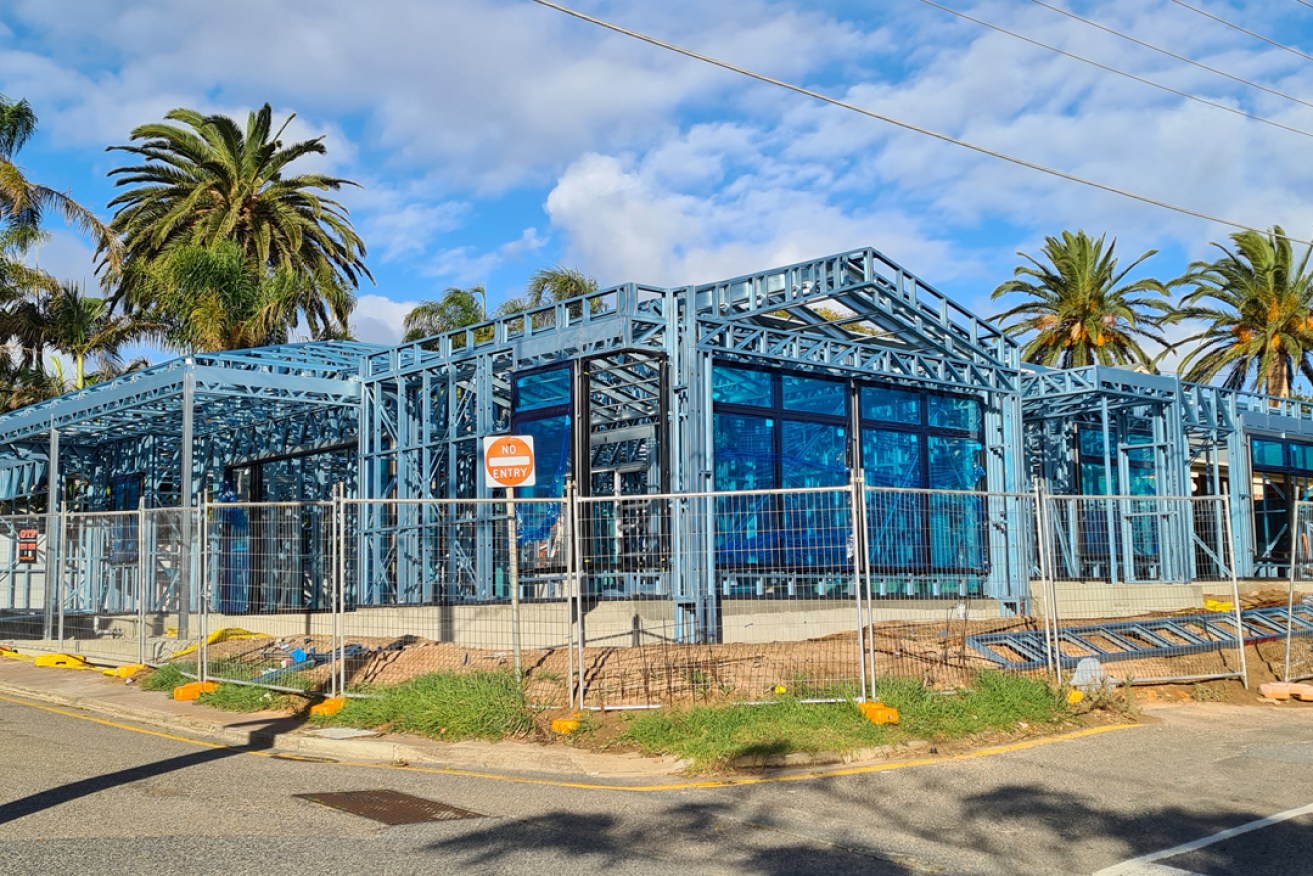Record construction figures hammer home SA jobs growth
The value of construction work in South Australia during the March quarter hit an all-time record of $1.69 billion while the number of people employed in the industry is also showing strong growth, according to latest ABS data.


South Australia's building and construction industry still has a massive backlog of projects to get through. Picture: Andrew Spence
Seasonally adjusted Australian Bureau of Statistics figures released yesterday show the SA growth was headlined by a record value of new home construction in the March quarter of $605.4 million, eclipsing the previous mark of $591.5 million set in the June quarter of 2018.
While the boom in new housing has been well documented on the back of the federal government’s HomeBuilder scheme, South Australia also reached a record for non-residential construction in March of $785.7 million, beating the previous record of $774 million set in 2010’s June quarter.
The value of renovations and additions in the quarter reached $140.9 million, up 8.8 per cent on the March 2020 quarter.
However, unit and apartment construction value fell to $159 million for the three-month period, down 36.8 per cent from the March 2020 figure.
Recently released figures from Master Builders Australia show South Australia is leading the way nationally in terms of construction jobs and wages.
Its analysis of ABS labour force stats found that South Australia’s construction industry had job growth of 5.6 per cent from March 14, 2020, to March 13, 2021, while wages also grew by 4.9 per cent in the same period. SA recorded the strongest result of the eight states and territories in both categories.
Nationally, construction jobs fell 0.5 per cent for the 12-month period, dragged down by sluggish performances from NSW, Victoria and Tasmania.
As at April 24 this year, there were 73,732 employed in South Australia’s building and construction sector.
This was up from about 70,000 before the coronavirus pandemic in March 2020 and more than 5000 more than the 68 500 employed in the industry in May last year, during the height of the local pandemic restrictions.
Master Builders Association of SA CEO Will Frogley said South Australia’s per capita uptake for HomeBuilder was the best in the country, which was a big factor for the overall performance of the local industry.
He said last week’s positive unemployment stats, which showed SA’s jobless rate had fallen for the third successive month, were driven by the building and construction industry’s continued strong performance.
“Nearly 74,000 South Australians are now directly employed in building and construction, up more than 5000 from this time last year – that’s the strongest performance in the nation and the benefits are flowing right through our economy,” Frogley said.
“Building and construction is a barometer for the wider economy … that’s why our economic recovery has been much faster than many people predicted.
“Governments have understood that residential and non-residential building have the second and third highest economic multiplier effects out of all industries and targeted them for stimulus.“
Frogley said South Australia’s strong record for keeping COVID out of the state and the thriving residential building sector had also translated to increased confidence in non-residential construction.
“As a result, we’ve seen private investment that was put on hold last year returning to the market,” he said.
“The massive state government education capital works program helped the industry absorb a period when there was a lot of nervousness out there and private investment was in retreat.
“Challenges remain, particularly with the border still closed, but we’re forecasting a small increase in the amount of non-residential building activity over the next four years.”
These challenges include global shortages of key building materials, which are leading to delays, Frogley said.
“Timber has been high profile but steel products, windows, plaster, tiles and many others are in short supply too,” he said.
“South Australia’s trade base is also struggling to handle such an immense workload.
“In terms of a solution, extending the HomeBuilder commencement timeframe from six months to 18 months will help spread residential work out but we still desperately need increased supply so projects aren’t delayed and cash flow is maintained.”




